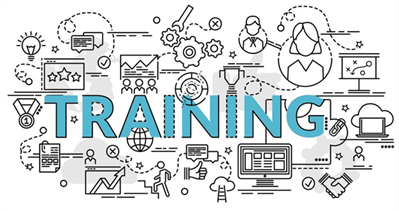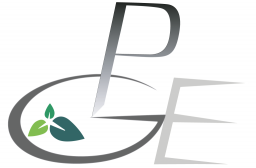Содержание
The team, which will potentially remain the same in a smaller company or startup, can now move on to the next project. Norms result from the interaction of team members during the development process. Initially, during the forming and storming stages, norms focus on expectations for attendance and commitment. Later, during the norming and performing stages, norms focus on relationships and levels of performance. Performance norms are very important because they define the level of work effort and standards that determine the success of the team. As you might expect, leaders play an important part in establishing productive norms by acting as role models and by rewarding desired behaviors.
The Definitive Guide to Behavior Driven Development (BDD) – Spiceworks News and Insights
The Definitive Guide to Behavior Driven Development (BDD).
Posted: Thu, 08 Sep 2022 07:00:00 GMT [source]
Marija Kojic is a productivity writer who’s always researching about various productivity techniques and time management tips in order to find the best ones to write about. She can often be found testing and writing about apps meant to enhance the workflow of freelancers, remote workers, and regular employees. Appeared in G2 Crowd Learning Hub, The Good Men Project, and Pick the Brain, among other places. Track the time you spend on individual tasks, to build daily and weekly reports of the time you spend on the project.
Performing
Hoping that your company or project will be a success won’t make it happen. But, it is important to remember that most teams experience conflict. If you are the leader, remind members that disagreements are normal. If they have reached the performing stage then there could be a sense of mourning if they have grown close. It’s important at this stage that the group starts to develop an understanding of the part each person will play. The next time you’re doubting the trust between you and a co-worker, remember that it’s natural.

Sherri has taught college business and communication courses. She also holds three degrees including communications, business, educational leadership/technology. For the team to perform at its best, a good leader will encourage creative conflicts and help celebrate and reward achievements.
Performing Stage
While problems may exist within the group, the quiet members do not voice their concerns and the group may not be able to reach an agreement later on. Conversely, if a question is asked, it must be addressed so that the group may continue their progress successfully. As a result of the tension experienced during storming, some groups are not able to move past this phase of development. The forming, storming, norming and performing model of team development. Today Public Health Departments are employing the teaming concept on a regular basis to make quality improvements to their critical processes. Team leaders and managers need to understand how teams mature and when to intervene when things are not progressing as desired.
In 1998, there were 37,775 injuries on farms to people under age 20. Using the following graph, find the rate of change, rounded to the nearest ten, in the number of farm injuries to people under age 20 with respect to time. Depending on the amount of bonding, this phase can be awkward and stressful. The areas of disagreement are discovered through open communication. Important to work through disagreements to build synergy and cohesiveness. Initial uneasiness and and uncertainty encountered during the forming phase.
Think of this phase like when you move in with a friend you’ve never lived with before, and you slowly start to notice the little things about them that get on your nerves. While some teams think they can skip this stage, it’s important to dive into it with the expectation that there may be some conflict. Team Meetings GuideLearn how the world’s best companies run effective team meetings – featuring insights from Figma, Buffer, Close, Webflow, Shopify, and more.
This can lead to conflict, disputes, and competition, depending on how their expectations, workflows, ideas, and opinions differ. Whether you are leading your entire company or a smaller project group, you have a huge influence onteam developmentand performance. It’s almost like being Captain America to The Avengers or Steve Jobs to Apple. Business owners, managers, and entrepreneurs are often viewed as team leaders.
Using The Stages Of Team Development
Move FORWARD. Join the Better Teams Community, FORWARD, to network and grow with some of the most experienced professionals in the field of team building and facilitation. We promise to send you useful and interesting team building activities and resources. Some teams are set up to accomplish a specific task and once it is done, the team will officially end. During this phase, the team has completed their work or decided not to continue working together.
Members may also deviate from their originally assigned roles as they explore their own methods of completing a task. Once a group receives the clarity that it so desperately needs, it can move on to the third stage of group development, known as the norming stage. The norming stage is the time where the group becomes a cohesive unit. Morale is high as group members actively acknowledge the talents, skills and experience that each member brings to the group.
Furthermore, at this stage, the team members don’t know whether they will be able to work well together and if they will fit in. They behave nicely, comply with instructions, and treat each other like strangers. One of those rules can be to remember to always listen to one another. No question is stupid, no idea is too silly to bring up, and no one is too “senior” to ask for help.
All good things must come to an end; and this is also true of groups. After a group has successfully completed their task, they must dissolve or disband from both the task and group members. This adjourning stage is used to wrap up activities of the group and provide a sense of closure to its members.
Mourning Or Adjourning
The storming stage is when the initial excitement and good grace has run out. The reality and the weight of completing the four phases of team development project has now most likely settled in. The team has just been introduced to each other and the task has been allocated.

For example, the seven-member executive team at Whole Foods spends time together outside of work. Its members frequently socialize and even take group vacations. According to co-CEO John Mackey, they have developed a high degree of trust that results in better communication and a willingness to work out problems and disagreements when they occur. Here’s the thing, the line between certain stages can get blurred since team members evolve at different times. How they trust each other to remain accountable for their tasks without dropping the ball.
Storming Stage Of Group Development
Groups are so in-sync during the performing stage that it seems to happen naturally. The most effective and high-functioning teams are cultivated. In the performing stage, members are confident, motivated and familiar enough with the project and their team that they can operate without supervision. Everyone is on the same page and driving full-speed ahead towards the final goal.
- Cliques and subgroups start to form, and members value competition more than collaboration.
- During the storming stage members begin to share ideas about what to do and how to do it that compete for consideration.
- Teams need a clear purpose and mission and should be reminded of them often.
- Finally, they should ensure the team can resolve internal conflicts and disagreements.
- She also holds three degrees including communications, business, educational leadership/technology.
- Emma-Louise Elsey has been coaching since 2003 and is the Founder of The Coaching Tools Company and Fierce Kindness.com.
Before committing to a tool, give your team some time to work with it and test it out to make sure it fits their needs. Lots of tools offer free trials, so use that time to experiment and check its compatibility with other products you use. By starting with a free trial, you have the freedom to learn as much as possible about the product before committing to it. Choose a project management software that lets you plan the entire project and assign deadlines and responsibilities so everyone can see what tasks need to be accomplished.
Managers Guide To Navigating The Four Stages Of Team Development
It’s only after two people get past the first valley that they can cross the chasm into real and lasting trust. Forming is the first stage of Tuckman’s group development model. This phase is often met with uncertainty as team members are becoming acquainted with one another.
Mature team members begin to model appropriate behavior even at this early phase. The meeting environment also plays an important role to model the initial behavior of each individual. Members attempt to become oriented to the tasks as well as to one another. This is also the stage in which group members test boundaries, create ground rules, and define organizational standards. Discussion centers on defining the scope of the task, how to approach it, and similar concerns.
Free Time Tracker
Keep reminding the team to check in with each other regularly in person or via instant chat, but stay out of their way. They will waste time and lose their focus if they have to answer frequent, unscheduled questions about what they’re working on. Encourage team members to develop a schedule filled with large blocks of time that are free from interruptions like meetings or check-ins. In this world of constant notifications, it’s easy for people to get derailed and forget which goals are really important.
Tuckman’s Team and Group Development Model empowers us to understand what stage we are at – and identify actions that we can take to help our team perform better. In addition, as well as taking specific action we can also decide to simply model great behaviour for others. Hopefully the cycle is shorter the next time around, especially if team members are aware. And a good leader watches for these shifts in order to step in and support the team back to higher levels of group functioning.
Clockwise’s Flexible Meetings feature allows for effortless scheduling across multiple calendars. Clockwise automatically chooses the best meeting time and even reschedules meetings when scheduling conflicts arise, allowing for more efficient project management. (Sadly, not a perfect rhyme.) Once a project ends, the team disbands. https://globalcloudteam.com/ This phase is sometimes known as mourning because members have grown close and feel a loss now that the experience is over. As the group starts to familiarize themselves, roles and responsibilities will begin to form. It is important for team members to develop relationships and understand what part each person plays.

